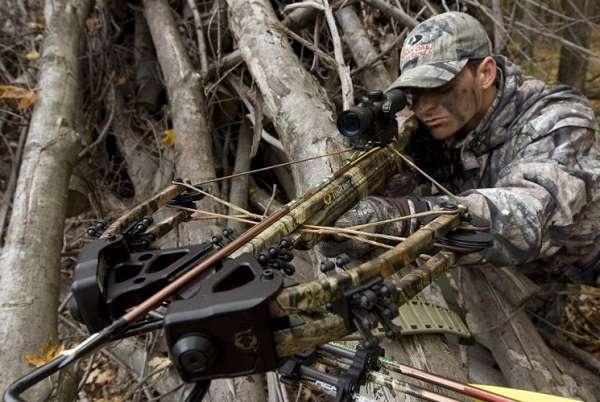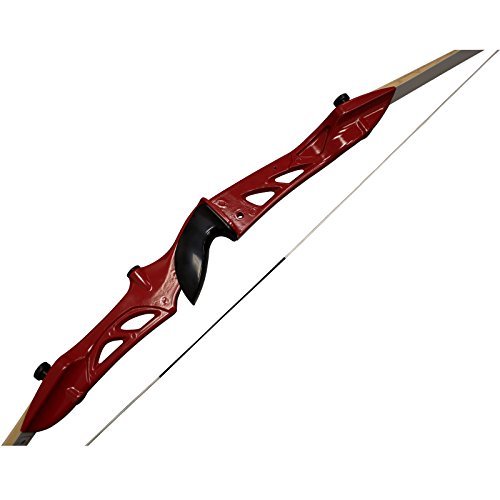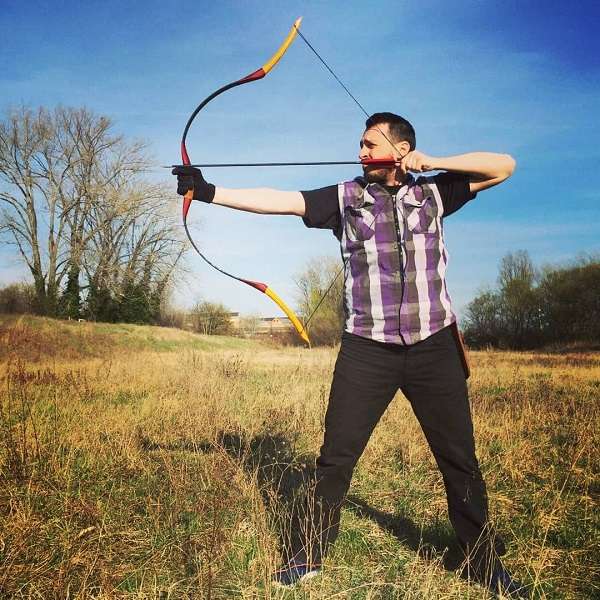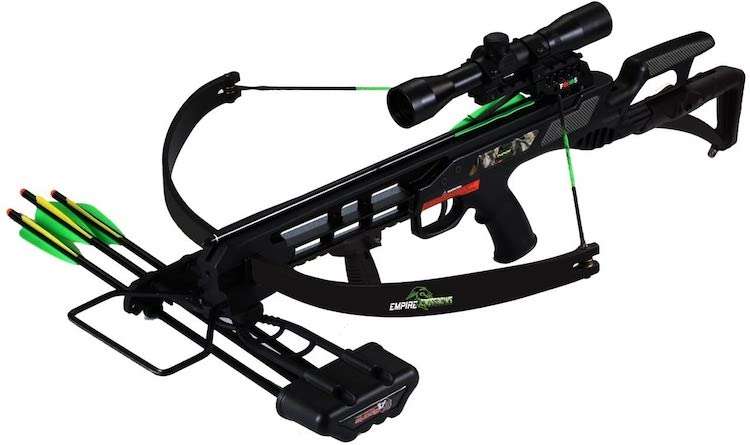
6 Best Hunting Crossbow Reviews & Guide 2023
Crossbows are increasingly becoming popular each day, which has, in turn, increased the interest in hunting. Crossbows have now become very complex items that have lots of mechanical aspects that are factored in, and without proper guidance, choosing the best crossbow for hunting can turn out to be a challenge.
The basics of selecting the best crossbow for you include; how it will be set up before going hunting, the type of game you intend to hunt, how to shoot the bow, and the bow’s accuracy, among others. There are numerous different models, varieties, and types of bows to choose from. When choosing the best hunting crossbow, there are various factors that you need to put into consideration, some of which we have highlighted below.
6 Best Hunting Crossbow In 2023
If you’re interested in hunting, the very 1st thing you need to consider is the type of crossbow that will suit your particular needs and abilities. Here are some of the most common types of crossbows.

1. Recurve Crossbows
A recurve crossbow can be described as a crossbow that has tips which curve away from the user. These crossbows have a much longer draw length as compared to the ordinary bows. Recurve crossbows provide more reduced hand shock and offer better acceleration. These type of crossbow is usually used by experts and advanced archers/shooters/hunters.
2. Compound Crossbows
A compound crossbow can be described as a modern bow that’s characterized by limbs that are much stiffer than those in re-curve crossbows, hence they require more pressure from the user because of their design. The bow’s structure allows it to become much more energy-efficient as compared to other types of bows.
The compound crossbows have the bowstring attached to pulleys, 1 or both of which have 1 or more cables that are attached to opposite limbs. When the bowstring gets drawn back, the bowstring makes the pulleys turn. This in turn makes the pulleys pull the cables which make the limbs bend, thus storing energy.
3. Rifle Crossbows
These types of crossbows are primarily designed to offer better aim, similar to how the rifles perform as compared to the other guns. Rifle bows are actually among the most advanced crossbow models one can use. A 150-pound rifle crossbow, can come with easily adjustable sights, heavy duty fiber construction and foot pull. The rifle crossbow can hit a target which is as far as 254 feet away.
4. Bullet Crossbows
These types of crossbows are so aptly named because they shoot bullet-looking projectiles which are made of lead, clay, or stone. There are some bullet bows that come with a barrel and string slot while others come with a double bowstring design.
5. Repeating Crossbows
For those who want a simple shortcut to the whole process of shooting, you can opt for the repeating crossbow. With this type of bow, you only need to make just a single movement and every other thing, from stringing, and projectile launching to shooting, will all be completed; this means you will be able to aim and shoot much faster.
6. Pistol Crossbows
These are the smallest types of crossbows. Pistol crossbows are very compact.
Choosing the Best Hunting Crossbow For Beginners
They are many benefits of hunting using crossbows. For instance, once the bow is sighted in, anybody can use it, doesn’t matter if the user is young or old, right-handed or left-handed. Once the crossbow is properly cocked, it is very easy for anybody to fire. This is what makes crossbows so handy, especially for beginners.
Shopping for the right type of crossbow can be very time-consuming since nobody wants to spend their hard-earned cash unless they’re completely sure they’re getting precisely what they want. Below we have highlighted some of the most important aspects to consider when choosing the best hunting crossbow;
Safety
One of the most important factors to consider when shopping for the best hunting crossbow for beginners is safety, and one of the key factors to consider is the actual quality of the safety and trigger mechanism. You’ll want to make sure that the bow you are purchasing has the automatic trigger feature, this means that the user will have to undertake an extra step so as to fire the bow, which means they are less likely to accidentally pull the trigger. You’ll also want to ensure that the bow’s trigger system is firm and sturdy.
Draw Weight
The primary factor that determines what a bow is best suited for, is the draw weight. If you are shopping for a beginner’s crossbow, you will probably want to choose a bow that has a draw weight that’s on the spectrum’s lower end.
The draw weight is rather important when choosing a bow and you should only select a bow that has a draw weight that you’re comfortable with. As the rule of thumb goes, more draw weight is faster, and less draw weight is slower. A draw weight of about 140 to 180 pounds is best, and it’s actually sufficient to take out a small game like deer.
The draw weight also directly affects the FPS, but there are exceptions where a bow with a lower draw weight might have a much greater or a similar FPS, as 1 with significantly much higher draw weight. Some factors which might lead to this can include different bolt sizes and the crossbow’s build quality.
Speed
You need to consider the bow’s speed. On average, most of today’s bows shoot between 250 fps and 350 fps. A 250 fps is enough to do a job efficiently, however, a 350 fps bow will hit much harder and will have a much flatter trajectory, which makes distance judging a none issue.
Bow’s Weight
If you are likely to carry the bow with you all day, an extremely heavy bow can be very cumbersome, thus you might want to consider buying a bow that has lighter parts. Moreover, arrows and bolts can add more weight to your overall load.
Noise Level and Recoil
To many hunters, noise is also a thing of major concern. A hunter will want to be very quiet while in the woods. When it comes to recoil, excessive recoil can greatly affect shooting accuracy. When buying a crossbow, choose a model that offers the noise level and recoil configuration which is best suited for your particular needs.
Purpose
Another key factor to consider is the intended purpose of the bow. Some crossbow hunters can use their bows outdoors for hunting games while others simply use them indoors or outdoors for target practice. If you are using a bow for indoor target practice, you might not need a lightweight bow, a heavier metal bow can be a great choice for you since they are usually more durable and more accurate than the lighter models.
Features
There are numerous features to consider when choosing a crossbow. You need to consider all the crossbow’s features carefully, and also weigh in all the pros and cons. Keeping all you have learned in mind, make sure you check out our selection of crossbows to find the hunting crossbow that’s best suited for you.





